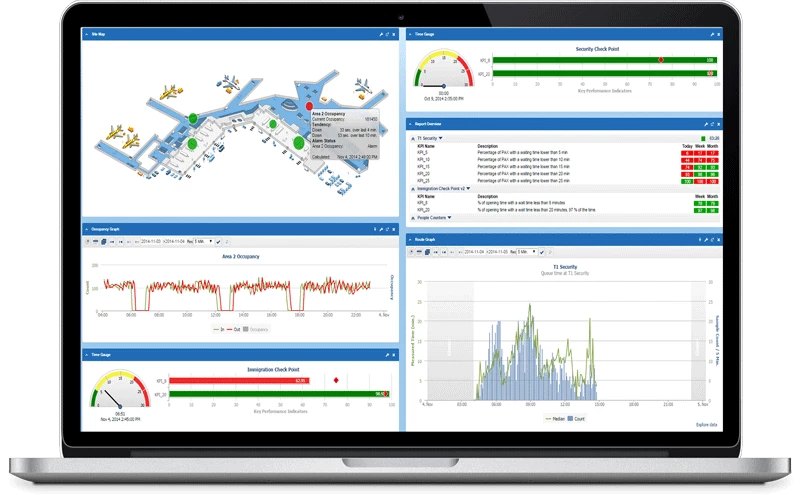Denmark’s Aalborg City Business Association is turning to a smart sensor network to monitor and analyze the impact of large-scale events, starting with its Christmas market. Known as BlipTrack, the technology tracks the public’s mobile phones and tablets to provide useful data that can be put to use in easing the flow of urban traffic, optimizing retail setups and more.
The solution, developed by BLIP Systems, makes use of a series of sensors placed at strategic points, designed to collect data from Wi-Fi devices. The system has been used in the past to manage traffic flow in train stations, and in Amsterdam Schiphol, Dubai International and Toronto Pearson airports.
The visually-unobtrusive Indoor Sensors feature a directional antenna design that allows for accurate positioning of smartphones and tablets, collecting data from around 50 percent of all people in the target area. They provide detailed stats about users, including their movement patterns and how long they spend in each area.
The data is translated into a real-time, online graphical user interface – presenting graphs and dashboards for analysis, and integrating Google Maps where appropriate.

In the case of Aalborg City, the network will be used to observe the number of shoppers, recording when and where they spend time, allowing the municipality to control the flow of people and cars. It will also give shopkeepers the opportunity to streamline their future retail operation, adjusting how many staff are on the shop floor at any one time, and tweaking opening hours in accordance with demand. The city has signed an initial contract to use the system for four years.
Given the advanced tracking capabilities of the solution, there are obvious privacy concerns to contend with. The company believes it has things covered, with the solution retaining no personal information, and with raw data being encrypted and uploaded to secure servers. This method of anonymizing collected information brings the system in line with the Data Protection Act.
Source: BLIP Systems


